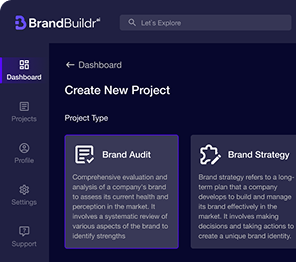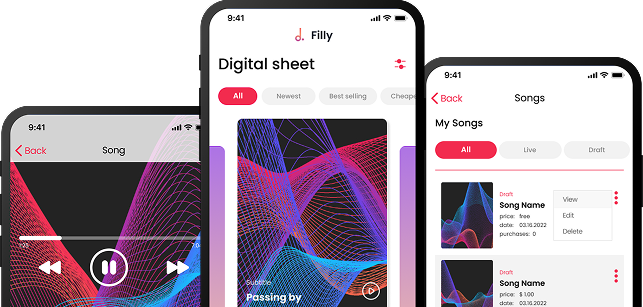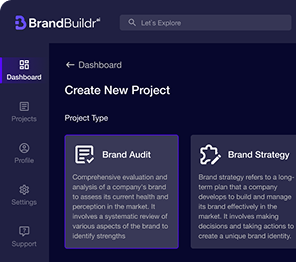As mobile technology continues to advance at a rapid pace, the demand for high-quality, efficient, and versatile mobile applications is greater than ever. Developers need robust frameworks to meet this demand, frameworks that not only simplify the development process but also ensure that the apps are reliable, scalable, and maintainable. In 2025, several mobile app development frameworks stand out for their capabilities and features. This article will delve into the top mobile app development frameworks of 2025, exploring their strengths, features, and why they are favored by developers worldwide.

1. Flutter
Flutter, developed by Google, has emerged as one of the most popular frameworks for mobile app development. It allows developers to create natively compiled applications for mobile, web, and desktop from a single codebase. Flutter's popularity can be attributed to its flexibility, performance, and the comprehensive suite of tools it provides.
Key Features
- Hot Reload: Flutter's hot reload feature allows developers to see changes to their code almost instantly, facilitating faster development and debugging.
- Rich Set of Widgets: Flutter offers a vast library of customizable widgets that adhere to both Material Design (Android) and Cupertino (iOS) standards, ensuring a consistent look and feel across platforms.
- Dart Language: Flutter uses Dart, a language that is easy to learn and offers powerful features such as async/await, which are crucial for smooth, high-performance apps.
- Strong Community and Ecosystem: Flutter has a robust community and a wealth of plugins and packages, making it easier to add functionality to apps without starting from scratch.
Why Developers Love Flutter
Developers appreciate Flutter for its ability to streamline the development process. The single codebase approach reduces development time and effort, and the extensive library of widgets and tools allows for rapid prototyping and development. Flutter's performance, near-native, and its flexibility in creating visually attractive, responsive user interfaces make it a top choice in 2024.
2. React Native
React Native, maintained by Facebook, remains a favorite among mobile app developers. It allows developers to build mobile applications using JavaScript and React, a popular library for building user interfaces. React Native stands out for its ability to produce high-quality apps with a native look and feel.
Key Features
- Reusable Components: React Native uses a component-based architecture, enabling developers to reuse components across different parts of an app or even in different apps.
- Live Reloading: This feature allows developers to see the results of the latest change instantly, speeding up the development cycle.
- Strong Community Support: With a large and active community, React Native offers extensive resources, libraries, and third-party plugins.
- Cross-Platform Development: Developers can write most of the code once and run it on both iOS and Android, significantly reducing development time and costs.
Why Developers Love React Native
React Native's ability to deliver a near-native performance while allowing for code reuse is a significant advantage. The use of JavaScript, a language familiar to many developers, and the component-based architecture align well with modern development practices. Additionally, the strong community support ensures that developers have access to a wealth of resources and tools, making it easier to overcome challenges and improve app functionality.
3. Xamarin
Xamarin, a Microsoft product, is a powerful framework for developing mobile applications using C. Xamarin allows developers to create cross-platform apps with a single codebase, sharing business logic and code across different platforms while still delivering native performance and user experience.
Key Features
- C Language: Xamarin uses C, a powerful and versatile language that enables developers to write robust and high-performance code.
- Native Performance: Xamarin applications have access to native APIs, ensuring high performance and a native user experience.
- Comprehensive Libraries: Xamarin offers a wide range of libraries for various functionalities, making it easier to implement features without extensive custom coding.
- Integration with Visual Studio: Xamarin integrates seamlessly with Visual Studio, providing a rich development environment with powerful tools and debugging capabilities.
Why Developers Love Xamarin
Xamarin's ability to deliver native performance and user experience while using a single codebase is highly valued by developers. The use of C and integration with Visual Studio streamlines the development process, making it easier to build, test, and deploy applications. Xamarin's comprehensive libraries and tools also reduce development time and effort, allowing developers to focus on delivering high-quality apps.

4. SwiftUI
SwiftUI, introduced by Apple, is a modern framework for building user interfaces for iOS, macOS, watchOS, and tvOS. SwiftUI simplifies the process of building complex UIs by using a declarative syntax, making it easier for developers to create and maintain their applications.
Key Features
- Declarative Syntax: SwiftUI uses a declarative syntax, allowing developers to describe the UI and its behavior in a clear and concise manner.
- Seamless Integration: SwiftUI integrates seamlessly with Apple's ecosystem, providing access to native APIs and features.
- Real-Time Previews: Developers can see real-time previews of their UI as they write code, making it easier to design and refine interfaces.
- Dynamic Type and Accessibility: SwiftUI automatically supports dynamic type and accessibility features, ensuring that apps are accessible to a broader audience.
Why Developers Love SwiftUI
SwiftUI's declarative syntax and real-time previews simplify the process of building and refining user interfaces. The seamless integration with Apple's ecosystem ensures that developers can take full advantage of native features and APIs, delivering high-performance and visually appealing apps. SwiftUI's support for accessibility and dynamic type also aligns with best practices, making it easier to create inclusive and user-friendly applications.
5. Kotlin Multiplatform Mobile (KMM)
Kotlin Multiplatform Mobile (KMM) is an innovative framework from JetBrains that allows developers to share code between Android and iOS platforms. KMM leverages Kotlin, a modern and expressive programming language, to simplify the development process and improve code maintainability.
Key Features
- Code Sharing: KMM allows developers to share business logic and other non-UI code between Android and iOS, reducing duplication and improving consistency.
- Interoperability: KMM integrates seamlessly with existing native codebases, enabling developers to adopt it incrementally without a complete rewrite.
- Strong Typing and Safety: Kotlin's strong typing and safety features help reduce errors and improve code quality.
- Support for Native Features: KMM provides access to native APIs and features, ensuring that apps deliver a native user experience.
Why Developers Love KMM
KMM's ability to share code between Android and iOS without sacrificing native performance and user experience is a significant advantage. The use of Kotlin, a language known for its modern features and safety, enhances the development process by reducing errors and improving code quality. KMM's interoperability with existing codebases also makes it a flexible and practical choice for many development teams.

6. Ionic
Ionic is a popular framework for building cross-platform mobile applications using web technologies like HTML, CSS, and JavaScript. Ionic allows developers to create hybrid mobile apps that run on both iOS and Android with a single codebase.
Key Features
- Web Technologies: Ionic uses familiar web technologies, making it accessible to a wide range of developers.
- Comprehensive UI Components: Ionic offers a rich set of pre-designed UI components that can be easily customized and used across different platforms.
- Capacitor: Ionic's Capacitor allows developers to access native device features through a simple API, bridging the gap between web and native functionalities.
- Extensive Plugins: Ionic has a vast library of plugins that provide additional functionalities, making it easier to add features to apps without extensive custom coding.
Why Developers Love Ionic
Ionic's use of web technologies makes it accessible to many developers, allowing them to leverage their existing skills to build mobile applications. The comprehensive set of UI components and plugins speeds up development and reduces the effort required to implement common features. Ionic's Capacitor also ensures that hybrid apps can access native device features, providing a seamless user experience.
7. NativeScript
NativeScript is a powerful framework for building native mobile applications using JavaScript, TypeScript, or Angular. NativeScript enables developers to create apps with a single codebase that runs on both iOS and Android, delivering native performance and user experience.
Key Features
- Native Performance: NativeScript provides direct access to native APIs, ensuring high performance and a native look and feel.
- Flexible Language Options: Developers can use JavaScript, TypeScript, or Angular, allowing them to choose the language and framework that best suits their needs.
- Rich Plugins and Extensions: NativeScript has a wide range of plugins and extensions that simplify the implementation of various features.
- Strong Community Support: NativeScript has an active community that provides extensive resources, tutorials, and support.
Why Developers Love NativeScript
NativeScript's ability to deliver native performance and user experience with a single codebase is a significant advantage. The flexibility to use JavaScript, TypeScript, or Angular allows developers to choose the best language and framework for their project. The rich library of plugins and strong community support also make it easier to build and maintain high-quality apps.
In 2024, frameworks like Flutter, React Native, Xamarin, SwiftUI, Kotlin Multiplatform Mobile, Ionic, and NativeScript are empowering developers to create high-quality, efficient, and versatile mobile applications that meet the growing demands of users and businesses.
Conclusion
In 2024, the landscape of mobile app development frameworks is diverse and dynamic, offering developers a range of options to suit different needs and preferences. From the flexibility and performance of Flutter to the robust community support of React Native, and the native capabilities of Xamarin, SwiftUI, Kotlin Multiplatform Mobile, Ionic, and NativeScript, each framework has its strengths.
Choosing the right framework depends on various factors, including the specific requirements of the project, the team's expertise, and the desired user experience. By understanding the key features and benefits of these top mobile app development frameworks, developers can make informed decisions that align with their goals and deliver high-quality, scalable, and maintainable applications.
As the mobile app development ecosystem continues to evolve, staying updated with the latest trends and technologies is crucial for developers. Embracing the right framework can significantly impact the success of a project, ensuring that applications meet the growing demands of users and provide exceptional experiences across various platforms.
Heading 1
Heading 2
Heading 3
Heading 4
Heading 5
Heading 6
Lorem ipsum dolor sit amet, consectetur adipiscing elit, sed do eiusmod tempor incididunt ut labore et dolore magna aliqua. Ut enim ad minim veniam, quis nostrud exercitation ullamco laboris nisi ut aliquip ex ea commodo consequat. Duis aute irure dolor in reprehenderit in voluptate velit esse cillum dolore eu fugiat nulla pariatur.
Block quote
Ordered list
- Item 1
- Item 2
- Item 3
Unordered list
- Item A
- Item B
- Item C
Bold text
Emphasis
Superscript
Subscript





















.avif)



.avif)

.avif)


